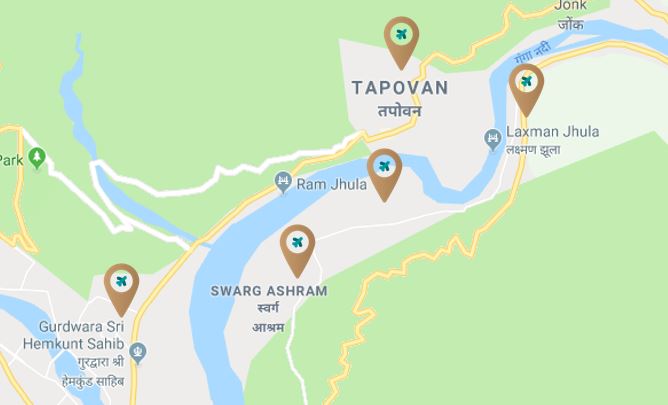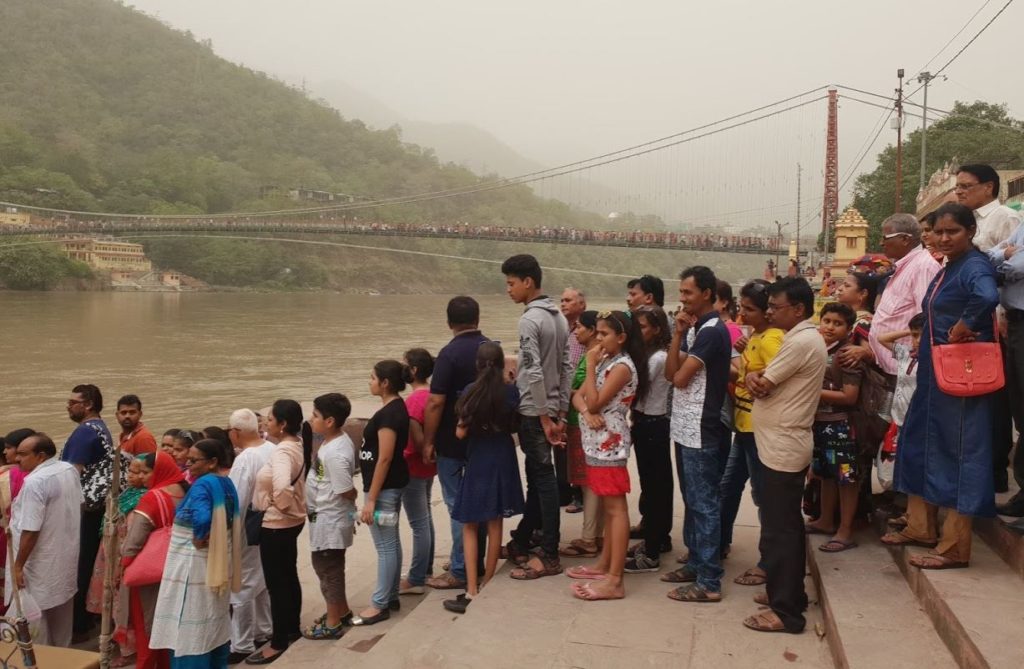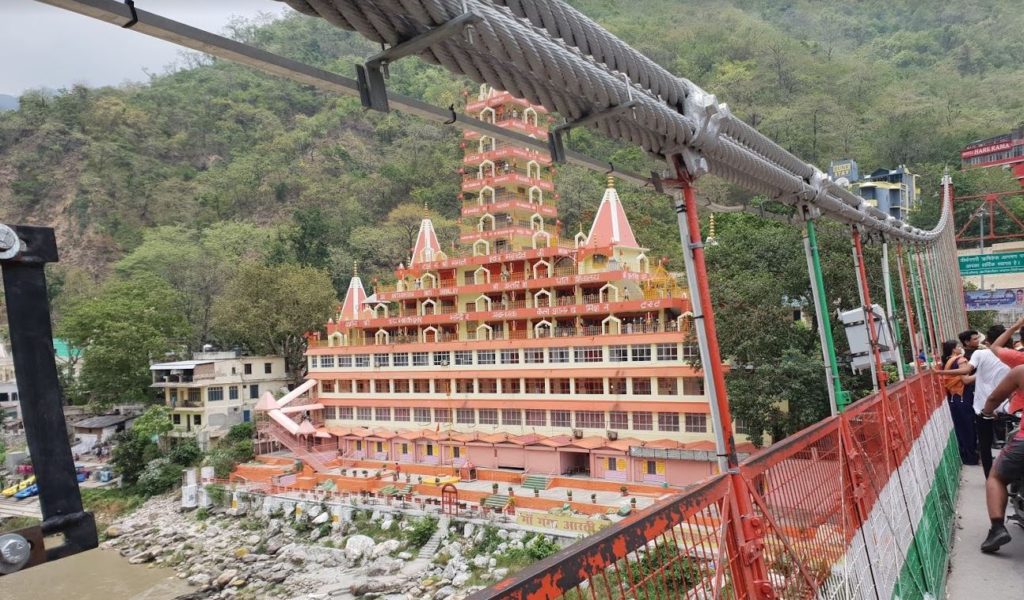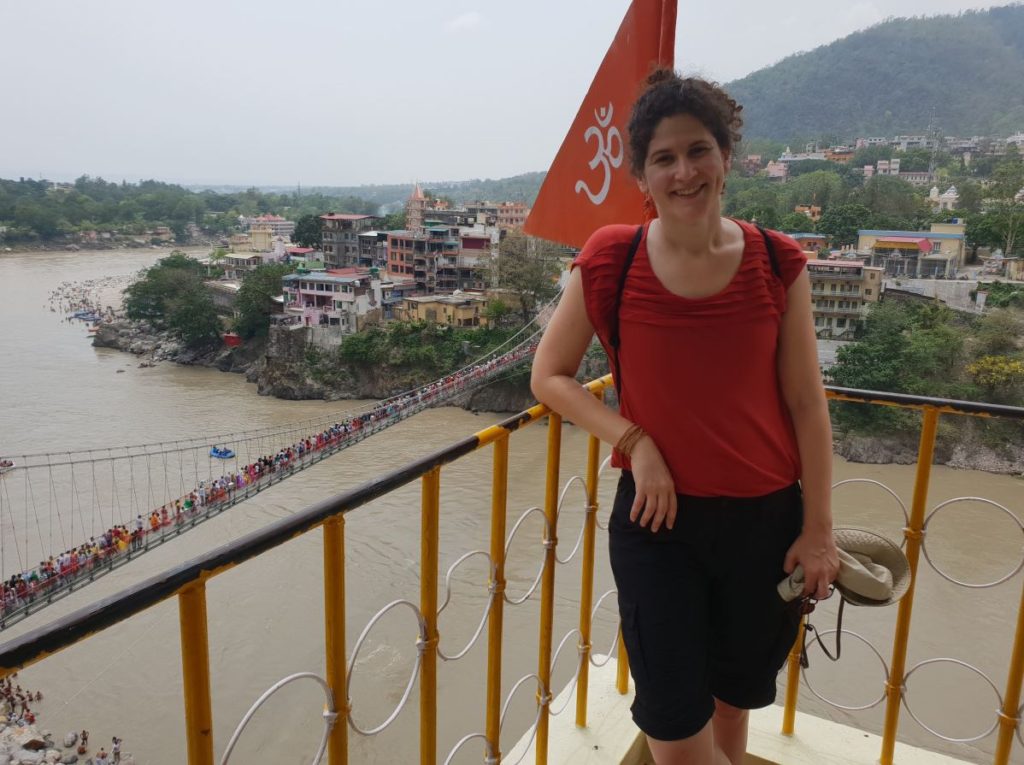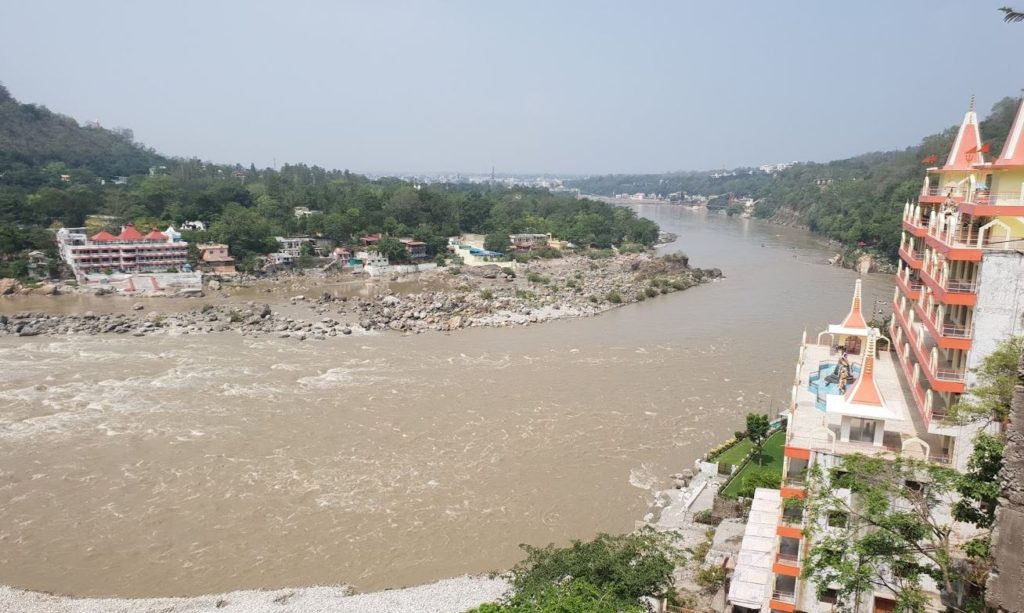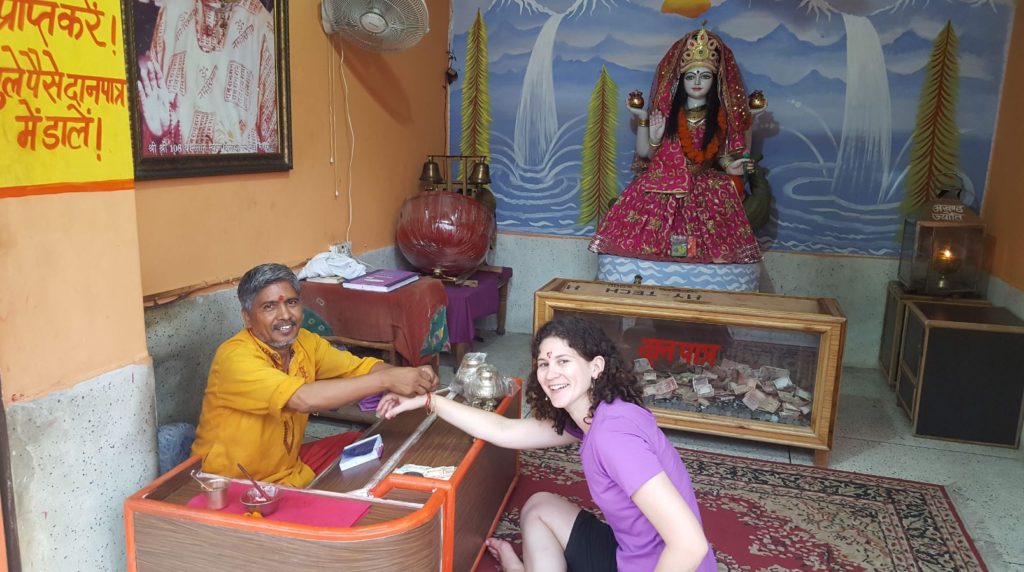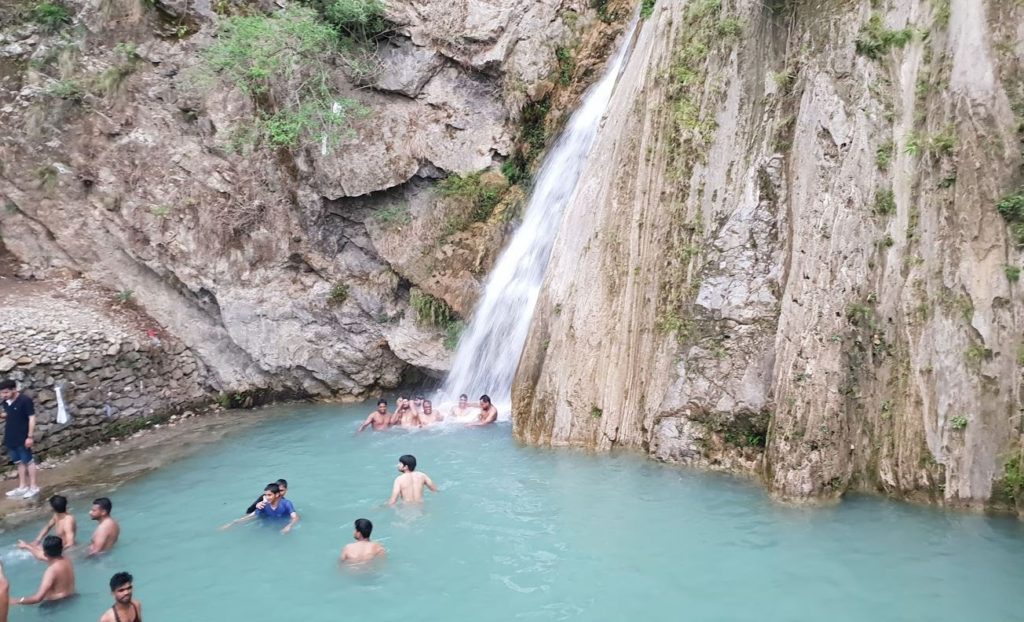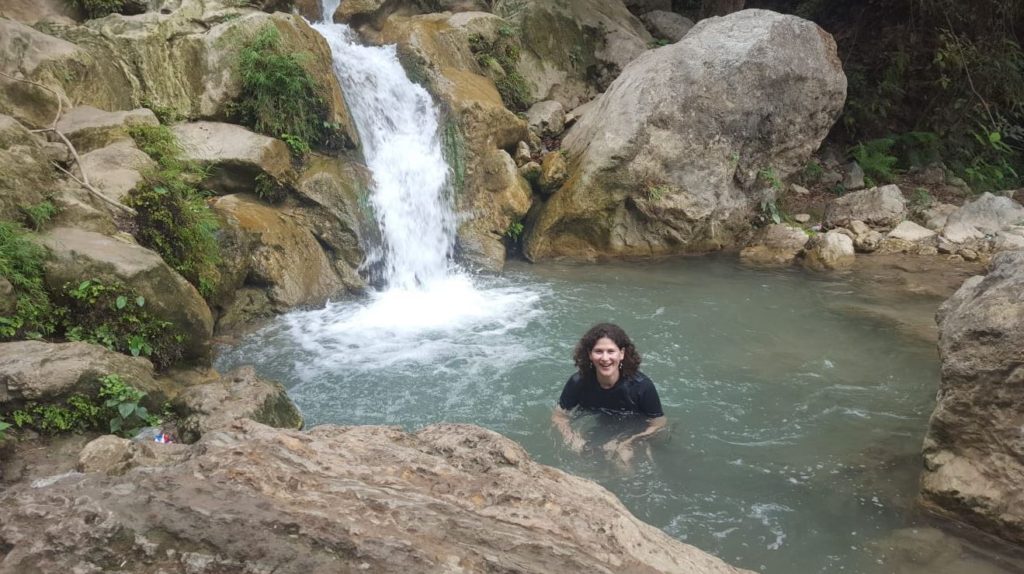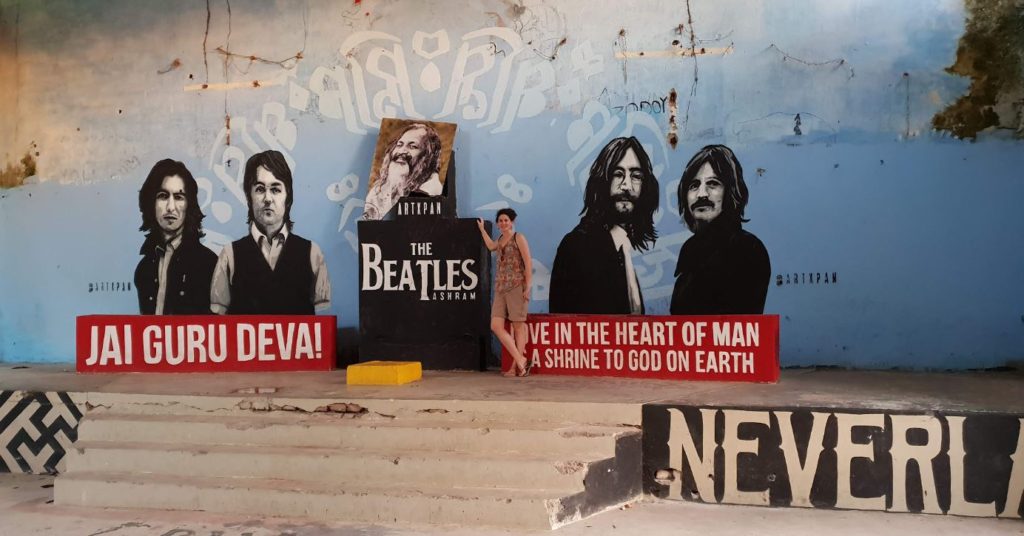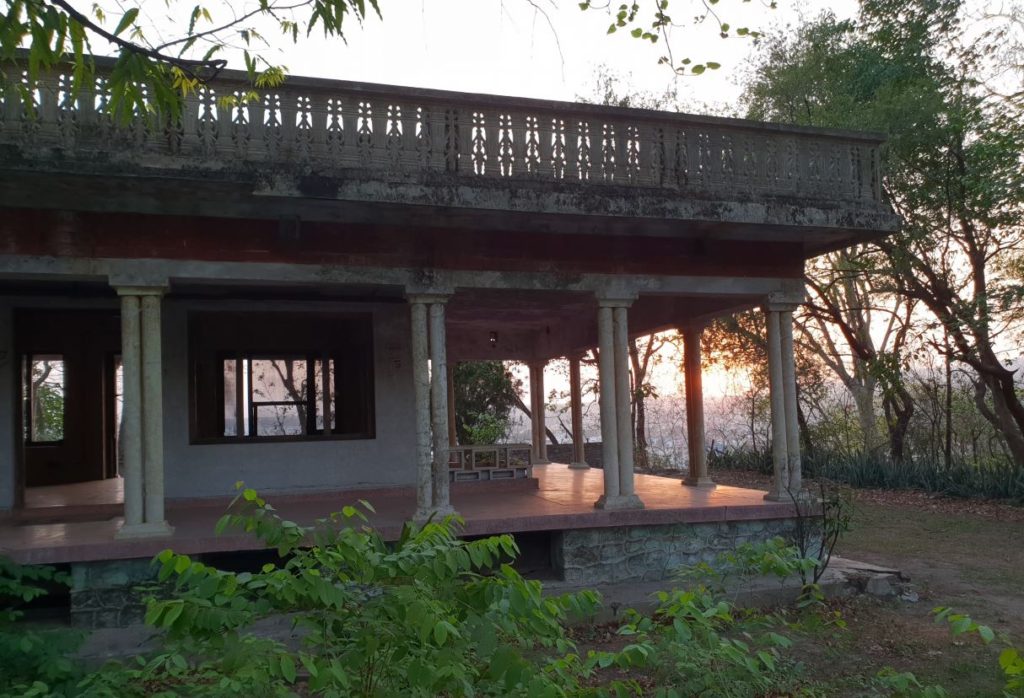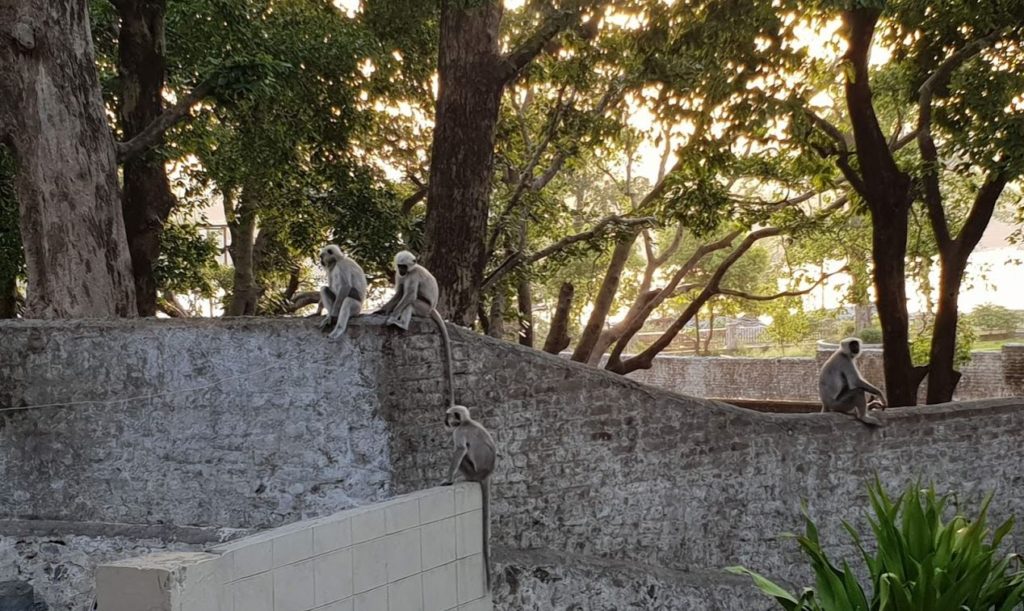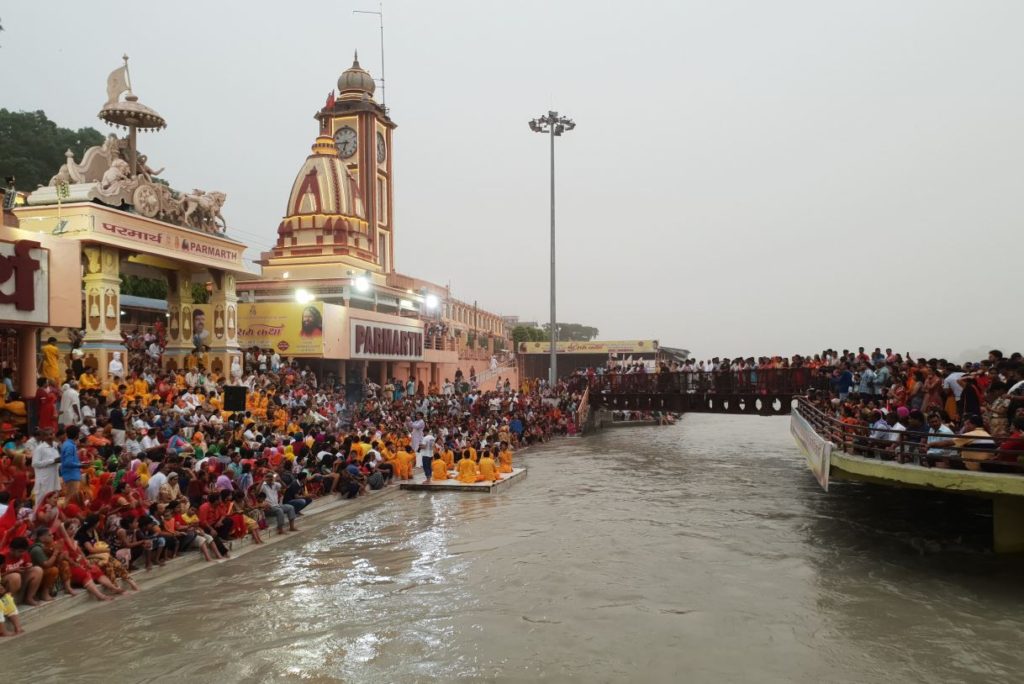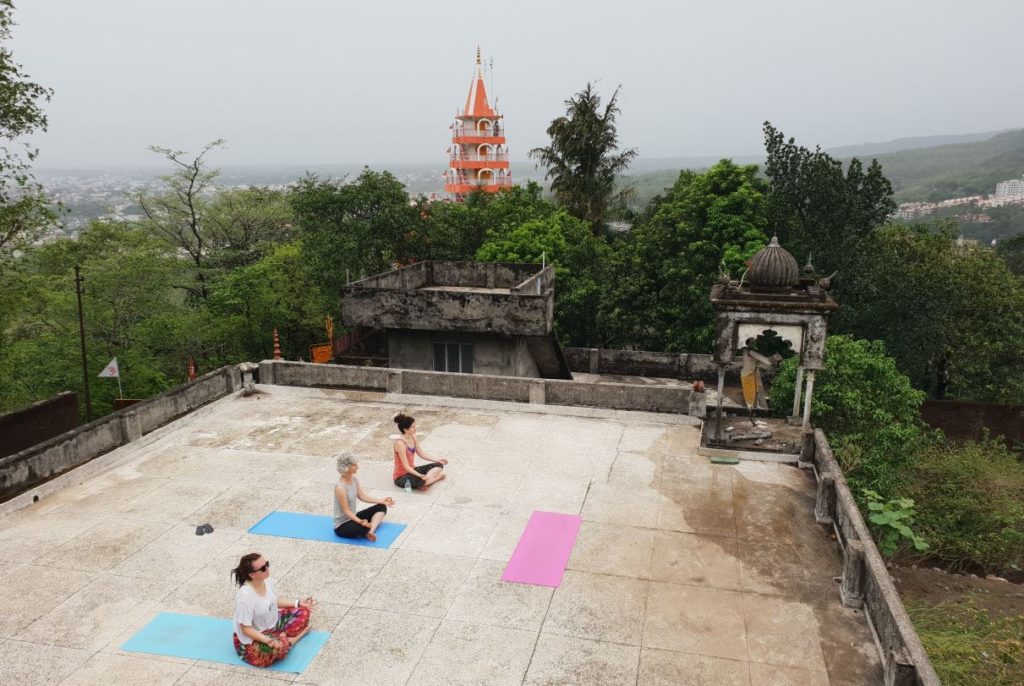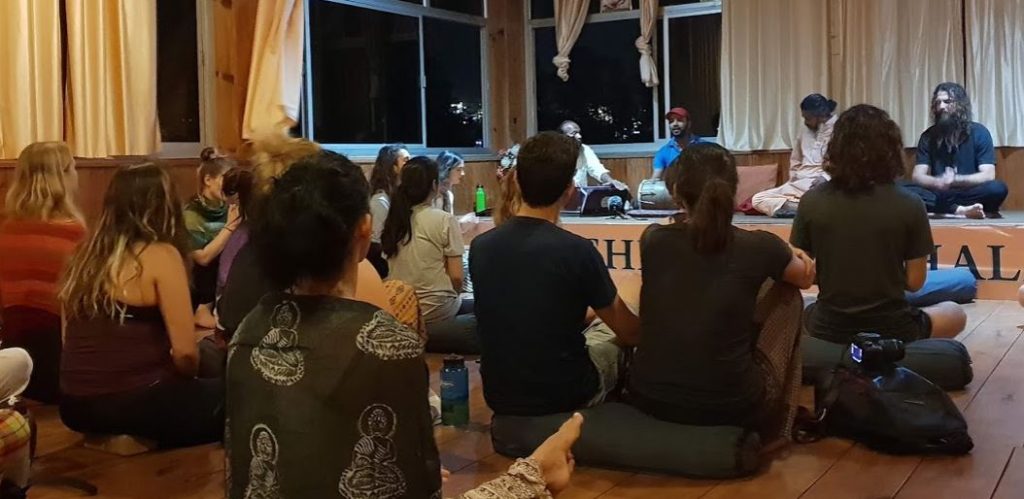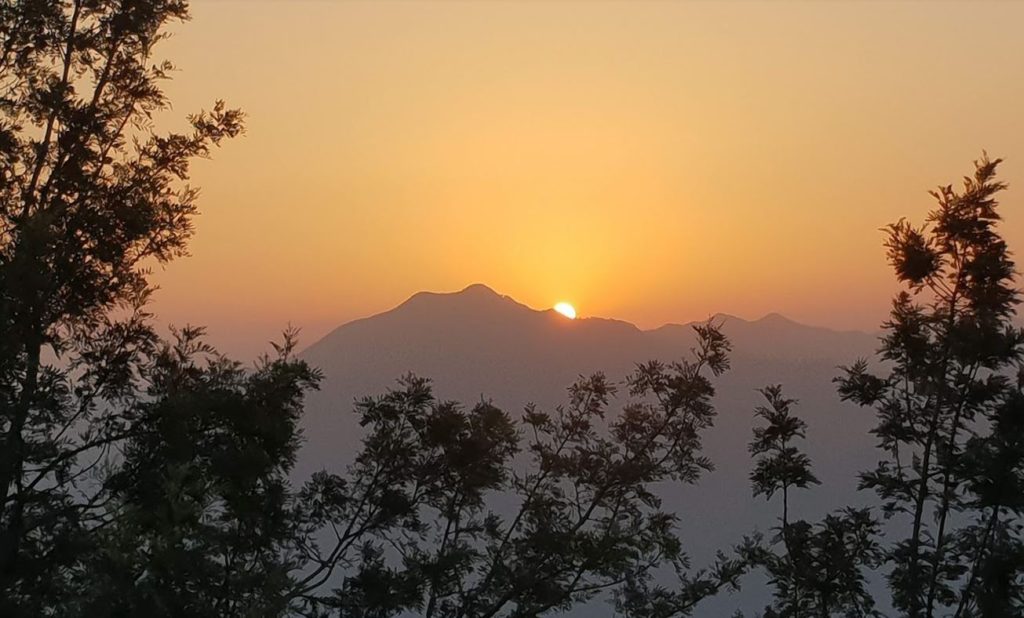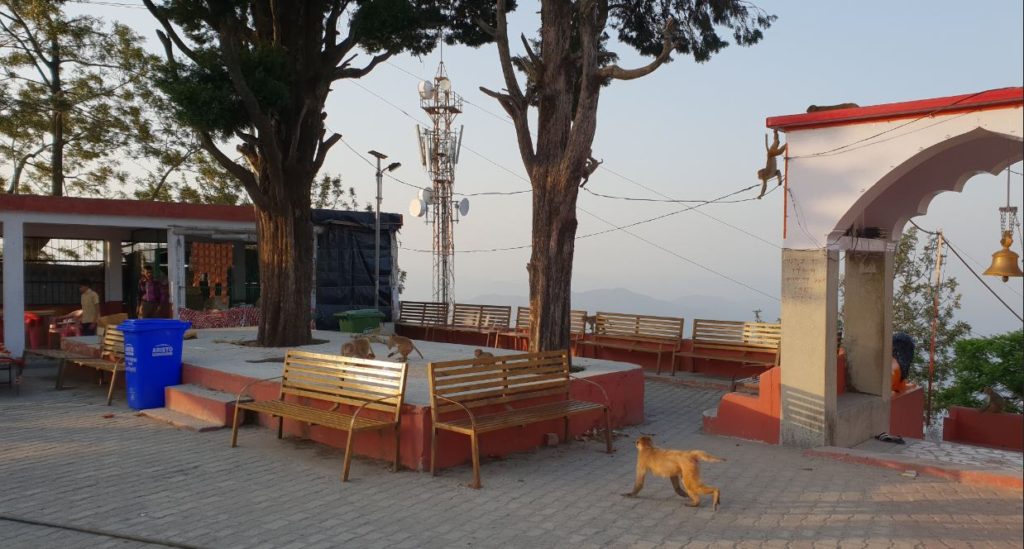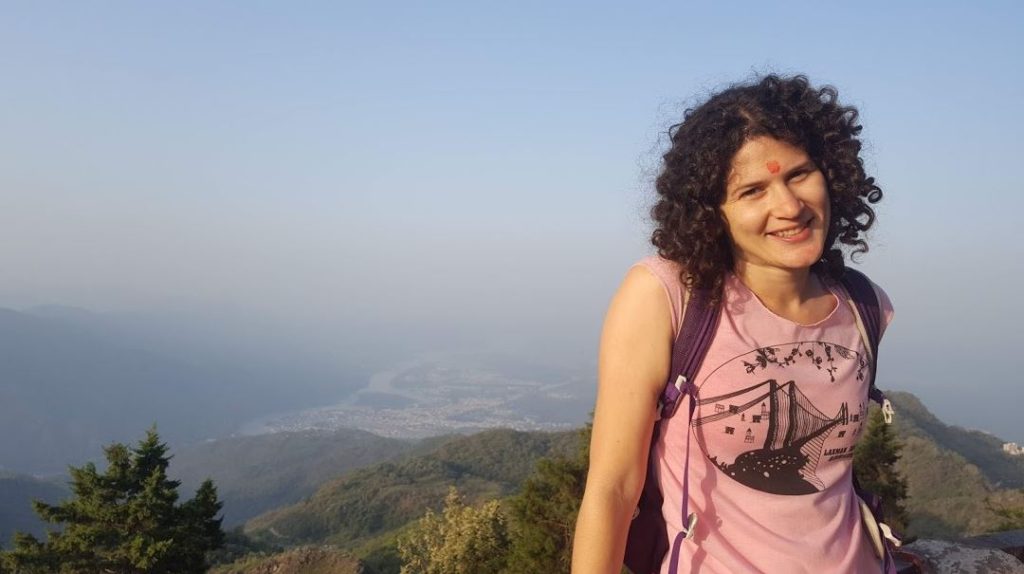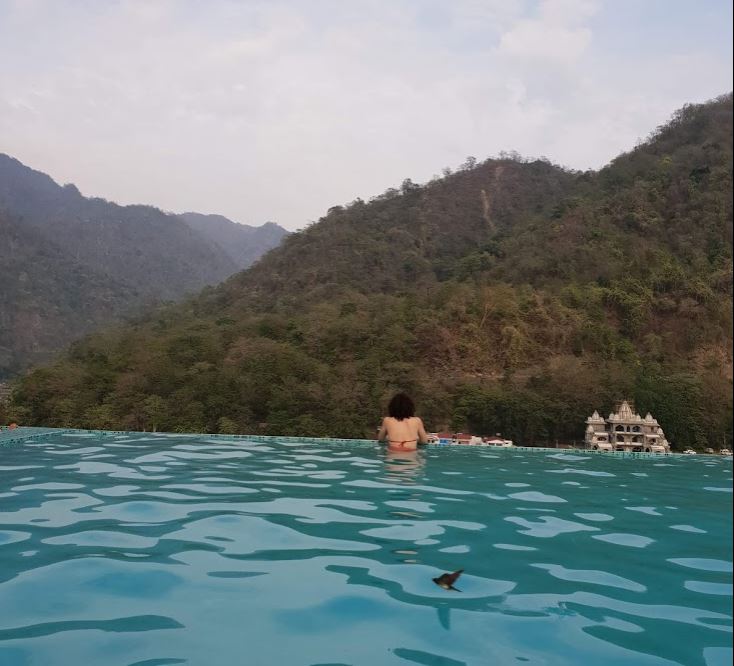Rishikesh is a holy city in India and a place of pilgrimage due to its location on the banks of the Ganges River. It’s an experiential city full of temples, Sacred rituals on the river, ashrams for meditation and yoga and many Indian tourists. My trip to Rishikesh lasted about ten days, 6 of which were dedicated to a yoga workshop in Ashram and the rest to tourism.
After Rishikesh I continued to Dharamshala, which you can read in my guide here.
Rishikesh map
Rishikesh is part of the state of Uttarakhand, india.
Rishikesh’s points of interest are between her two famous bridges: Laxman Jhula and Ram Jhula, located in the northern part. Jhula means a pedestrian bridge, though cows, monkeys and scooters also cross the bridges with the crowds.
In the TAPOVAN area you will find Rishikesh luxury hotels, countless agencies offering hiking, rafting, bungee and taxis as well as there is a large market, three ATMs and authentic Indian restaurants.
The LAXMAN JHULA area on the east side of the bridge has most of the good and western restaurants with views to the Ganges, shopping main street and the city’s impressive temple, Swarg Niwas Temple. Many of the puja rites, mass rituals on the river take place on this side of the Ganges, near the temples.
In the SWARG ASHRAM area that starts near the Ram Jhula Bridge is the Rishikesh Yoga Center and most of the ashrams and yoga centers are concentrated there. Also south of them is the ashram where the Beatles accommodated, a highly recommended site. Here, too, there are some ATMs.
South of the bridges is Greater Rishikesh, the inhabited area of the city but devoid of tourist interest. South of Rishikesh is the city of Haridwar.
At the bottom of the article you will find a full map of Rishikesh with all the sites and points of interest.

When should you go to Rishikesh
Rishikesh is one of the hot and humid cities of India and reaches particularly high temperatures in May and June. A cooler visit is possible there during the months of October to March. If you still visit during the warmer months, try to organize accommodation with air conditioning or at least a pool to cool you down. Yoga centers have almost no air conditioners, just keep in mind!
I arrived at Rishikesh on a flight to Dehradun Airport. The drive from there to the city took three hours (Sunday afternoon traffic jam) but back to the field, at six in the morning, the ride took an hour.
Rishikesh sites
Swarg Niwas Temple
The biggest and most impressive temple in Rishikesh is the Swarg Niwas Temple, near the Laxman Jhula pedestrian bridge on its eastern side.
This huge temple contains hundreds of prayer rooms and statues and you can climb it 13 stories and reach beautiful views of the city. Admission is free, but you will be asked to leave your shoes outside (or hide your shoes in your bag). In some rooms and floors there are “holly” Indians who will bless you while using a red bracelet and tica in the forehead for a quite small fee of a few dozen rupees.
Sita ram dham Temple
Another great and impressive temple, from the west side of Laxman jhula is Sita ram dham. The temple entrance is built in an opposite direction of Swarg Niwas temple – entering it on the high floor and go dawn to the many lower levels, right down to the banks of the Ganges.
Neergarh waterfall
Neergarh waterfall is a fun pool site within an hour’s walk of Rishikesh (or Rickshaw ride). Continue on the main road on TAPOVAN’s side about 3 km after the city ends, until the junction with the name of the waterfalls neergarh road.
The large pool complex starts where there are many food stalls and chai tea but we found a few steps below a small pool and a hidden waterfall without people. Women will be more comfortable entering the water with a shirt, because the Indians are really staring at whoever came with a bikini.
Beatles Ashram
One of the main reasons that Rishikesh became famous in the West is due to the Beatles’ stay in Ashram in the city for three months in the late 1960s.
The ashram of the Guru Maharishi hosted many celebs in those years and even today when it was abandoned, the site is still worth a visit. Spend at least an hour wandering among the crumbling and special buildings, some of which include a view of the river. Entrance fee is Rs 600 and the site officially closes at 5pm, though you will be allowed to sign in later as well as there is light.
The ashram is a half-hour walk south of Ram jhula and is now part of the Rajaja Nature Reserve. Note that if you want to go on an animal tour there (elephants, elk, tigers) you will have to travel further south from the ashram to another entrance. The reserve is closed for tours between mid-June and November and what I understand is almost no chance of seeing a tiger there.
At the entrance to Ashram, we came across Langur monkeys, rarer primates that are considered much more calm and peaceful compared to the common macaque rhesus monkeys.
Puja ceremonies on the Ganges
Every evening before sunset, from 18:00, the Rishikesh Puja ceremonies begin on the banks of the Ganges River, usually near the temples. Tens and even hundreds of people attend these ceremonies, singing and praying and offering small gifts to the river. Anyone who wants to see a really huge ceremony can take a rickshaw to nearby Hardiwar (at least half an hour’s drive) but we were content with Rishikesh’s impressive ceremonies.
Yoga at Rishikesh: Swarg Ashram
It is true that Rishikesh is full of ashrams and places that offer yoga courses and classes, but the recommendation is to go on familiar places and not choose without getting a pre-set opinion (There are also many crooks). The most common product is a 200-hour yoga teacher course and a 300-hour follow-up course, each taken around a month. We chose Yoga Retreat: a six-day course that includes two yoga classes a day, philosophy and knowledge of yoga, massage, and a sunrise tour, rafting on the Ganges, and a puja ceremony. We were accompanied by local nice guides during all the activities.
The village is entirely an Indian village. This means the buildings of the yoga centers are in a semi-agricultural settlement, with cows living in the courtyards, donkeys, garbage, mango trees and field crops between the buildings. Of course, every corner of India has food stalls, small restaurants and not even bad cafes at all. Note that the pictures on the Ashram websites do not always reflect the actual situation, but after the initial market you will probably fall in love with us instead.
Rishikul center website: https://www.rishikulyogshala.org/
Sun rise at Kunjapuri temple moun
Within an hour’s drive (at 4 am) is a lovely temple on the top of a mountain that overlooks Rishikesh and the mountains around it. We went there to see the sun rise and it was definitely an inspiring sight. The temple is full of monkeys who allow themselves to come closer to people and search for food in their bags, so keep your things and do not get too close to them. By the way, the road to the top of the mountain and the temple is a classic Indian way: curvy and narrow and with an abyss beside it … It’s better to take a nap and not look if you haven’t gotten used to this madness.
Rafting on the Ganges River
Apparently, even if the river is holly and intended for ceremony and purification among Hindus, it is also possible and desirable to do rafting on boats. The experience is more like a rapid cruise than rafting (because the river is not very flooded) but seeing the Indians overflowing the boats in the river and getting excited is worth it. Rafting can be done in three different lengths of route: 20, 16 and 8 km, and prices range from Rs 800 to 2000. The most successful part of rafting is sailing under the famous bridges and jumping into the cool river water.
There are lots of travel agencies that can arrange a boat for you and prices are the same in all of them, so I recommend setting it up a day in advance so you don’t waste time in the morning. Come in long swimsuits (bikini not allowed) and with a bottle of water, you can bring cell phones and keep them in a sealed bag that they will provide you and also pay extra price for your video from a Go Pro camera that the instructor is taking.

Rishikesh Map
And finally - where do you sleep in Rishikesh?
We spent the first three nights in Rishikesh at the Aloha Hotel, an apartment complex combined with a high-class hotel (it simply had air conditioners). The hotel pool saved us in the hot moments. The restaurant there was relatively expensive for the rest of the city, but very tasty. Later we slept in the ashram in the yoga village.

